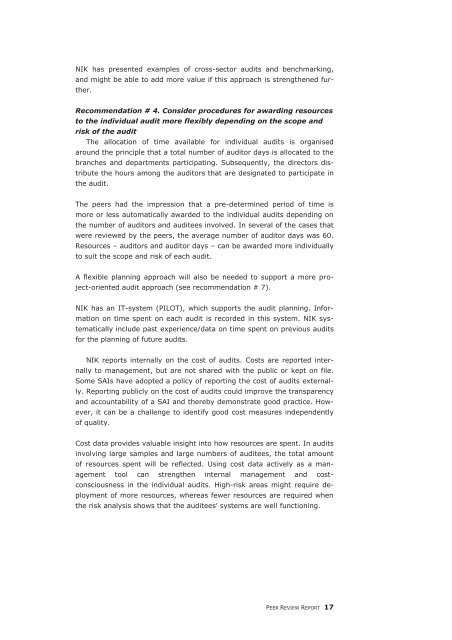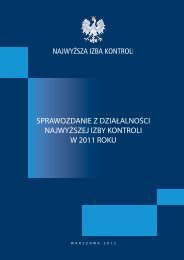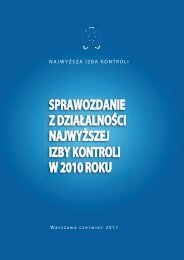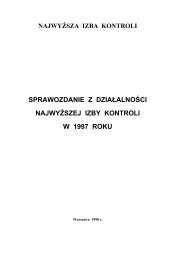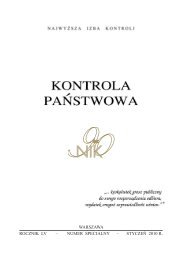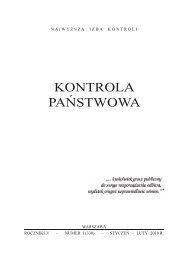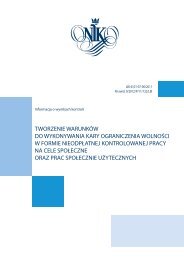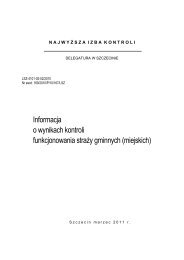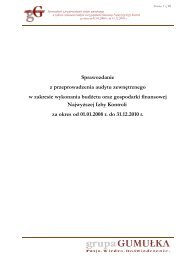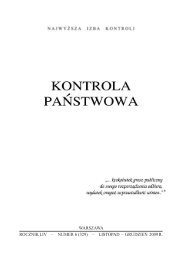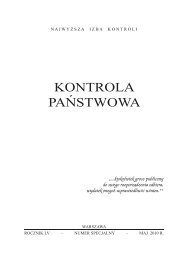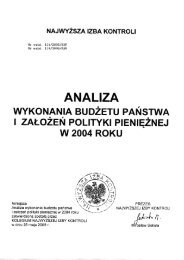NIK peer review report - Najwyższa Izba Kontroli
NIK peer review report - Najwyższa Izba Kontroli
NIK peer review report - Najwyższa Izba Kontroli
You also want an ePaper? Increase the reach of your titles
YUMPU automatically turns print PDFs into web optimized ePapers that Google loves.
<strong>NIK</strong> has presented examples of cross-sector audits and benchmarking,and might be able to add more value if this approach is strengthened further.Recommendation # 4. Consider procedures for awarding resourcesto the individual audit more flexibly depending on the scope andrisk of the auditThe allocation of time available for individual audits is organisedaround the principle that a total number of auditor days is allocated to thebranches and departments participating. Subsequently, the directors distributethe hours among the auditors that are designated to participate inthe audit.The <strong>peer</strong>s had the impression that a pre-determined period of time ismore or less automatically awarded to the individual audits depending onthe number of auditors and auditees involved. In several of the cases thatwere <strong>review</strong>ed by the <strong>peer</strong>s, the average number of auditor days was 60.Resources – auditors and auditor days – can be awarded more individuallyto suit the scope and risk of each audit.A flexible planning approach will also be needed to support a more project-orientedaudit approach (see recommendation # 7).<strong>NIK</strong> has an IT-system (PILOT), which supports the audit planning. Informationon time spent on each audit is recorded in this system. <strong>NIK</strong> systematicallyinclude past experience/data on time spent on previous auditsfor the planning of future audits.<strong>NIK</strong> <strong>report</strong>s internally on the cost of audits. Costs are <strong>report</strong>ed internallyto management, but are not shared with the public or kept on file.Some SAIs have adopted a policy of <strong>report</strong>ing the cost of audits externally.Reporting publicly on the cost of audits could improve the transparencyand accountability of a SAI and thereby demonstrate good practice. However,it can be a challenge to identify good cost measures independentlyof quality.Cost data provides valuable insight into how resources are spent. In auditsinvolving large samples and large numbers of auditees, the total amountof resources spent will be reflected. Using cost data actively as a managementtool can strengthen internal management and costconsciousnessin the individual audits. High-risk areas might require deploymentof more resources, whereas fewer resources are required whenthe risk analysis shows that the auditees’ systems are well functioning.PEER REVIEW REPORT 17


